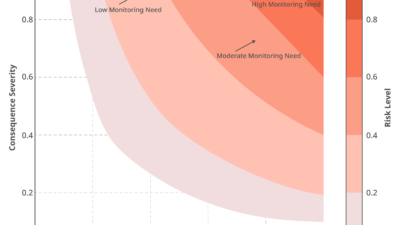Digital technology brings asset performance information throughout the enterprise

With the ubiquity of cloud technology, improved analytics, and increased mobility driving productivity throughout manufacturing industries, the digital revolution has enhanced older processes and provided a new perspective for industrial operations. The digital revolution offers groundbreaking ways to take operational data and properly communicate the information across an enterprise from the plant floor to the corporate office.
In our very connected world we have been moving away from a layered architecture to a near-real-time fluid environment to dramatically improve the quality of strategic decisions. The transition to fluid asset performance management (APM) and data collection allows plant managers and C-Suite executives to make better, faster business decisions and identify emerging opportunities for competitive growth, as well as more efficiently manage risk and maintain asset reliability across the enterprise.
Industry goes digital
For decades, manufacturers employed laborious, inefficient methods for shop floor data collection that were primarily handwritten logs, analog instrumentation printouts or crude charts representing physical properties like temperature, pressure and flow rate.
With the introduction of digital technology, these manual methods were at first displaced by simple, automated data transfer. While computer-generated methods represented an improvement, the analytical methods were still lacking. Only if there was a failure would operators conduct time-consuming and costly in-depth analysis.
Automated data collection made more information available for investigations into plant operations and with the advent of data historians in the 1980s, data could be continuously gathered over long periods of time. Additionally, with data historian technology, periodic sampling emerged for data collection over a set period of time within the limits of affordable digital media storage and with techniques analogous to time-lapse photography. Plant operators could now create a better picture of what was happening without requiring a large volume of expensive media storage.
At this point, when more granular information was needed to solve a problem, it could be found in the distributed control system (DCS) if the issue was investigated promptly. The historian would have months, even years, of data captured, and the DCS provided millisecond response data points but only for a short period, measured in days or weeks. All investigations and related analyses took place manually so they were still only initiated by some extraordinary event, including an accident, injury or regulatory violation.
While advanced technology and mobility has changed the internal analysis process, even today manufacturing and other industries do little more than make use of a minimal set of vendor-supplied analytics related to machine-specific solutions – automated instrument calibration, instant vibration analysis of pumps and compressors, or other equipment related algorithms. Only highly mature and successful companies leverage their data (historical and real-time) to quantify risk and cost for the development of optimal equipment strategies. The analytical capabilities of affordable processing and storage capacity are just beginning to be tapped.
While manufacturers may have individual pockets of risk assessment best practices in place, executives admit, and statistics substantiate, to having an overall poor understanding of the varied risks running throughout their organizations and the best ways of managing them. There are huge competitive advantages for organizations that understand what their risks are and know how to assess and control them.
The future of digital
Now, more than ever, it is critical that the boardroom and the plant floor establish a line of clear, timely, and consistent methods for communicating company performance and identifying and managing risk throughout the entire enterprise. Effectively managing risk requires data and adequate systems and processes for translating volumes and different types of organizational data into information that can be understood for making risk-related decisions.
With technological innovations and the rise of connected machines, APM solutions provide enhanced risk management, asset reliability and comparative analysis for operational goals. In manufacturing, oil and gas, power and other industries, we collect billions of data at the plant floor every day that gets analyzed, consolidated, and periodically sent to remote operating centers or central IT departments. At this level the information is collected across multiple plants, packaged, and reported to the C-Suite executives. Digital innovations including the three advancements below are beginning to dramatically improve the APM process:
-
Cloud. The cloud has emerged as a new approach to collect and deliver information. With data historians in the cloud, we can collect near-real-time information from multiple plants in different locations and distribute information and data. We can distribute data to various applications because cloud technology has reduced delivery and operation time and improved the level of standardization in the field.
-
Analytics. Analytics transforms data into actionable insight and drives asset reliability by predicting and preventing failures. We can use analytics to translate the real-time data about an asset or production and when it might fail. We can also filter this data to remove what is not relevant. Removing the thousands of false alarms we receive daily improves the predictability of the machine and device behavior.
-
Mobility. Mobility delivers the right information to the right people across the organization. Mobility has improved collaboration between remote communication centers and the field by sharing information as it is available.
In most industrial organizations, decisions are made in silos for different ends: commercial, trading, logistic, and production. Making decisions to optimize the departmental performance does not translate into also optimizing the value chain of the enterprise.
There is an increased need for integration and standardization across the enterprise to maximize the impact of data being processed and interpreted immediately with advanced digital technology. Companies that standardize processes and leverage data to move the decision making about asset maintenance and reliability to higher organizational levels, thus placing a higher importance on APM, outperform other organizations.
APM improves risk management by providing critical insights into the reliability of plant assets. Operationally, reliability may be defined as an asset maintaining the desired performance without degradation. The asset should meet the operational needs of the process. If the asset does not meet desired performance then it is considered unreliable, even if the operational performance demand is outside the bounds of its design specifications. Leadership must acknowledge that asset reliability affects operations directly and should be considered a key component to operational excellence, not just maintenance excellence.
Another important use of data throughout part of APM processes is comparative analysis. Using comparative analysis tools, plant managers and executives can set operational goals to improve production by identifying what they want to achieve from their equipment and what targets should be set. Organizations can perform both external comparative analysis to measure performance against the performance of industry competitors and internal comparative analysis to measure the performance of individual company sites and units against each other. Linking organizational leadership to performance data will enable more informed and timely decisions, ensuring that the power of each asset is being utilized properly.
More industrial vendors are emerging with solutions capable of collecting, analyzing and converting data into information and actionable knowledge. These solutions and even services use machine inputs, advanced rules development and management techniques to automatically analyze the data, create maintenance strategies and then develop recommendations. With enhanced asset performance management and data analysis, plant operators and executives can optimize production, better understand the asset life cycle, improve safety and manage operational risk for real advantages in the industry market.
Roy Whitt is senior vice president at Meridium and general manager of Meridium’s Asset Answers platform.



